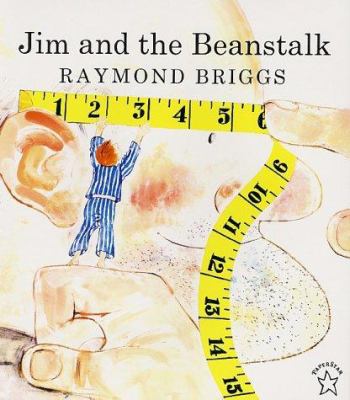During my grade 5 placement, I was introduced to the concept of BANSHO, but I never really got to experiment with it as I was in an open-concept school and the resources were limited. So, on my grade 2 placement, I got to try it out and I must say, it was a huge success!
For those who don't know, BANSHO is a Japanese teaching technique where students are provided a problem and are allowed to solve it using whatever strategies they chose. After, their answers are grouped according to strategies chosen and are put on display so they can see the various ways of solving the same problem. It's a great teaching tool and I highly recommend trying it out!

I was teaching grade 2 measurement, so students were just introduced to the concept of perimeter being the "total distance around an object." I read "Jim and the Beanstalk" by Raymond Briggs (a continuation of "Jack and the Beanstalk"), where the giant enlists Jim's help to get a new wig, some dentures, and some glasses. The pictures show Jim measuring the giant. Next, I showed students the problem: The giant wants to remodel his garden just like Jim helped "remodel" him. He needed to find the total amount of fencing for his new gardens. I provided pictures of the gardens and measurements of each straight side and had students trying to figure out the total perimeter. They were allowed to use whatever math manipulatives they wanted.
Walking around the class, I was able to make anecdotal notes of what the students were doing -- I made notes of tools being used (snap cubes, hundreds charts, counters, standard algorithm, base ten blocks) and if students were comfortable using that tool (were they using it correctly?).
 |
| Consolidation at the carpet |
 |
| Our BANSHO wall |
Thanks for posting this activity Amanda. Up until now I really had never heard of this technique before. It was great to see it explained with an example and the outcomes. I really like how it allows the students to use their individual skills and problem solving. I love that it shows students that there are multiple ways to tackle the problem. This kind of thinking helps students realize that their ideas are good, no matter what anyone else thinks and that they can think outside the box and succeed in life. I have been able to take part in Inquiry based science PD that works a little the same and it was just wonderful to see how it works and building the problem solving abilities of our students.
ReplyDeleteGallery Walk is another one of my favourite strategies. I like to give my student math investigations where I provide them with a problem after my minds on and they work on it with a partner. They really enjoy this activity as they feel the responsibility is in their hands, also because they get to work with someone. I find this works well in my classroom as students get a chance to work with someone different all the time and learn from one another. I like to take up their answers by doing a gallery walk where students actively engage with other students' mathematical ideas. It is a great way to get students to look at how other students solved the problem and provide suggestions/comments (orally or written) to help improve the clarity or accuracy of their work. This is a great strategy for teachers to use as it provides teachers with assessment for learning. Teachers can see the range of mathematical answers (responses) in the classroom and to hear mathematical thinking as the students discuss their classmates solutions.
ReplyDeleteHello friends. Today I want to talk about dental implants, dental implants in Cancun are very cheap and if you ask yourself snap in dentures cost? prices are from 1200 usd. Do not wait any longer see Cancun vacation and returns with a whole new sonrissa
ReplyDelete